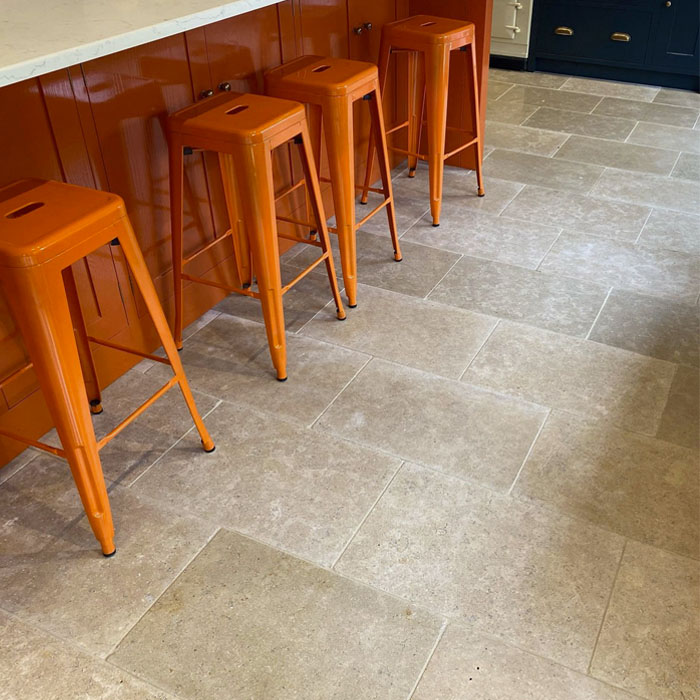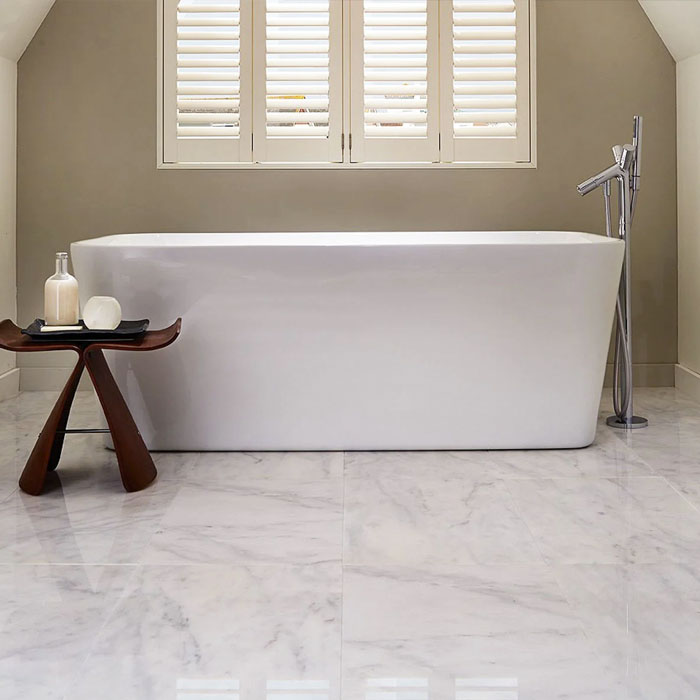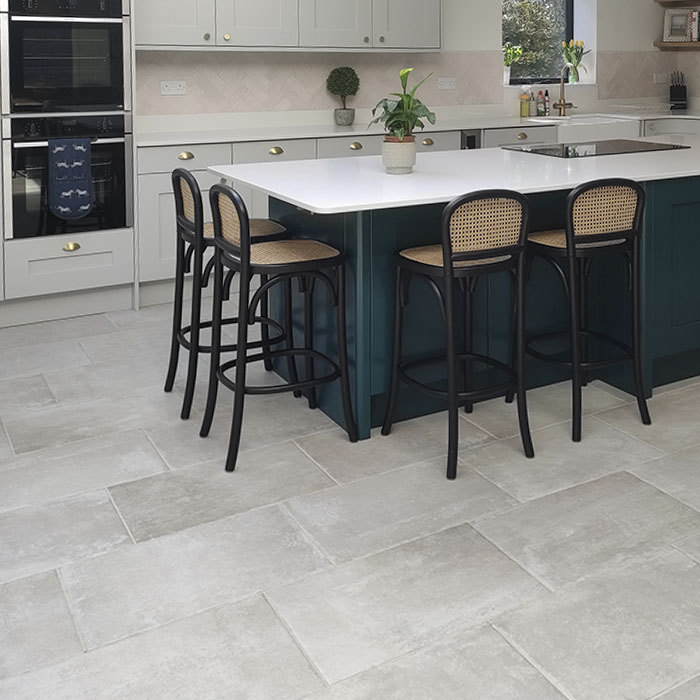When it comes to placing tiles in your home, you might be under the impression that you can use whatever tiles you like wherever you want – and if they look good in your chosen room, then why not?
Well, sadly, we’re here to tell you that not all tile types are suited for use in the same areas of the home. In fact, making sure you choose the right types of tile for your needs is crucial to avoid having to replace them after only a couple of months of use.
So, to make choosing a tile flooring that much easier, here is exactly what you need to know about the different tile types we have available at Stone Superstore, and which types of tile are best suited for specific areas of the home.
What are the different tile types we have available?
While there is a whole abundance of tile options out there for you to choose from, here at Stone Superstore, we offer our customers tiles sets made from the following materials:
- Limestone
- Sandstone
- Marble
- Porcelain
- Ceramic
But, as anyone looking for tiles knows, there is more to picking your tiles than their base material, which is why we also offer customers numerous tiles finish options, such as:
- Honed and filled tiles
- Tumbled
- Polished
- Antiqued
- Matte
- Textured
As a result, there are many tile combinations out there that you can choose from, making it tricky to know which types of tile work best in which areas of the home.
How to choose a tile set for your home
So, now you know the different types of tile and finish combos we have available, let’s now move on to how you can identify where in the home your favourite selections are best suited for being used.
To do that, we’re going to look at each tile type available and assess their strengths and weaknesses so that you know where best to use them.
1. Natural stone tiles
Encompassing any tiles made from limestone, sandstone, and marble, natural stone tiles offer you an excellent level of flexibility for where you can place them.
In fact, it is possible to install and use any natural stone tile in any area of your home. However, due to their nature, some natural stones are softer than others, making them ill-suited for spaces that are exposed to excessive foot-traffic or regular dampness.
Limestone and sandstone
Limestone and sandstone tiles, in particular, are considered the softest of these stone options, despite their excellent durability, and are therefore ill-suited for these areas without the proper preparation.
For example, we generally don’t recommend tiles such as white limestone in your kitchen and living areas, as they can stain and mark easily even when sealed properly. Instead, we’d suggest using this type of tile in your bathroom while opting for our denser Dijon Limestone for use on floor areas that get a lot of traffic.
On top of this, if you’re hoping for a shiny and polished floor with a set of natural limestone tiles, then you’re likely going to be disappointed. While limestone can be polished, it won’t stay this way for long, and you will likely have to pay someone to come and buff them again. Instead, for a polished option, you’re better off choosing marble-effect porcelain tiles.

Our popular Dijon Limestone tiles are durable enough to be used in kitchens, bathrooms or even hallways
Marble
If a hard-wearing stone tile set is exactly what you’re after, then marble is your best option. Incredibly tough and less porous than other stone types, marble can be used in the kitchen and bathroom without any of the issues associated with softer stone. However, bear in mind that it is often more expensive as well.

Our polished Ibiza Bianco Marble tiles are a beautiful addition to any stylish space
Why choose natural stone?
Natural stone does come with several benefits that make it a better tile option for messy and outdoor spaces. For one thing, you can sand out any scratches and scuffs on these tiles, leaving them looking as good as new, and their excellent durability means they’re less likely to break than other tile types.
And when done right, a set of stone tiles can last you for decades, requiring only minimal maintenance and cleaning throughout the years, so long as you remember to reseal it every so often for protection against dampness and stains.
If you’re interested in learning more, read our guide to natural stone tiles.
2. Porcelain tiles
Unlike natural stone, porcelain tile options are a fantastic choice for any room that is exposed to water and spills on a regular basis, meaning that anyone wondering what type of tile is best for bathrooms and kitchens has their ideal option right here.
And there’s a good reason why porcelain tiles are so often used in these rooms. They have outstanding water resistance but are also highly durable, making them nearly impervious to the effects of regular foot traffic, but they can also be easily cleaned, providing a low-maintenance tile option for those who need it in areas that get regularly dirty.

Our Provence Bianco porcelain tile offers the illusion of natural stone with minimal maintanance
And on top of all this, porcelain can be styled to mimic a variety of other tiling types, including natural stone, giving you the flexibility, you need if you want to design your kitchen with a stone aesthetic, without any of the downsides.
However, as with natural stone, porcelain too also has its drawbacks. For one thing, porcelain tiles are prone to chipping if you’re not careful, especially along the edges, and damage like this will need to be actively repaired as it can’t be sanded away.
On top of this, porcelain can also be quite heavy, making it potentially unsuited as a wall tile or for use on any surface with a weak subfloor. It also does not retain heat very well.
3. Ceramic tiles
While they can be similar in appearance, ceramic tiles are absolutely not the same as porcelain ones and should thus not be treated like porcelain when considering your tiling options.
Generally speaking, ceramics are cheaper and weaker than porcelain tiles, and although they can look identical, their durability leaves a lot to be desired. As a result, we do not recommend using ceramic tiles for anything other than wall tiles, for which they are well suited thanks to their reduced weight.
Tile finishes
Although the type of tile material you choose will play a key role in the properties it will provide to your floor, it’s also worth briefly touching on the different types of tile finishes available, as these too can play a small role in determining where your tiles are best placed in your home.
For example, brushed, sandblasted, and tumbled natural stone tiles all provide a certain level of slip resistance over and above polished and matt finish tiles, making them a good kitchen or hallway choice when selecting tile flooring.
Of course, there are also the aesthetic benefits they can offer on top of this. Explore our inspiration blog for further information on the specific effects that each tile finish can offer or speak to our experts directly.
And that’s it! You should now have no issues choosing the right tile type for your project needs – though if you do have any further questions on this topic or would like to inquire about picking up some free sample of your preferred tile type before you place an order, then get in touch with our team of experts today.

